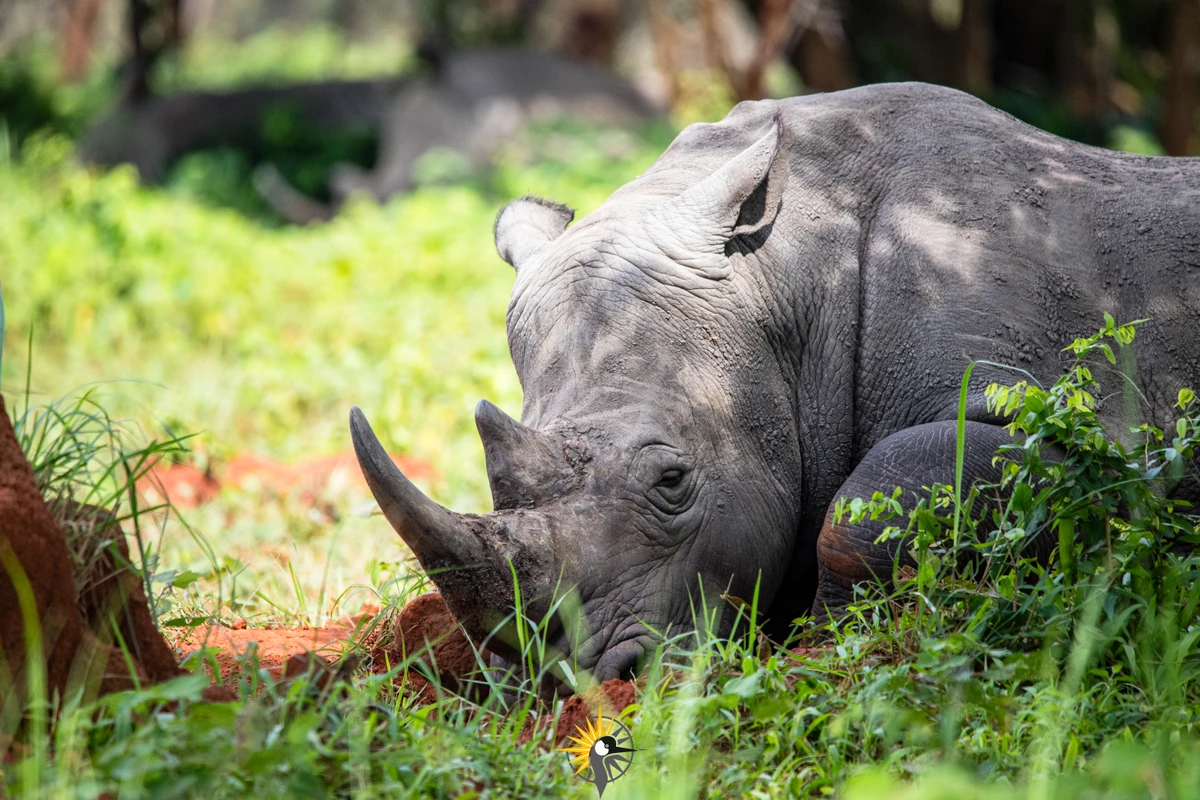Rhinos, or rhinoceroses, are some of the most awe-inspiring creatures to roam the Earth. With their immense size, prehistoric appearance, and distinctive horns, they have captured the imagination of wildlife enthusiasts and conservationists alike. As symbols of strength and resilience, rhinos embody the beauty and fragility of nature.
This article explores the fascinating world of rhinos, from their biology and habitats to their behavior and the conservation challenges they face.
Five Unique Species of Rhinos
The rhinoceros family consists of five species, each with distinct characteristics and ecological roles.
The white rhino, found primarily in southern Africa, is the largest and most sociable species. It is recognized by its wide mouth, adapted for grazing on grasslands. Despite its name, the white rhino isn’t white, the term comes from a misinterpretation of the Afrikaans word wyd, meaning "wide," which refers to its mouth shape.
The black rhino, native to various regions of Africa, is smaller and has a pointed upper lip suited for browsing shrubs and bushes. Black rhinos are more solitary and aggressive compared to their white cousins.
In Asia, the Indian rhino, also known as the greater one-horned rhino, inhabits grasslands and wetlands. Its thick, armor-like skin gives it a prehistoric appearance, and it is a conservation success story, with populations rebounding in recent decades.
The Javan rhino, found only in Indonesia, is critically endangered. This elusive species prefers dense tropical rainforests and is among the rarest large mammals on Earth.
The Sumatran rhino, the smallest of the species, is closely related to ancient woolly rhinos. It inhabits the forests of Sumatra and Borneo, but its population has dwindled alarmingly, making it one of the most endangered mammals.
Habitats: The Homes of Rhinos
Rhinos occupy diverse ecosystems across Africa and Asia. In Africa, white rhinos thrive in open grasslands and savannahs, while black rhinos prefer scrublands and desert edges. These environments provide the vegetation and water sources essential to their survival.
In Asia, the Indian rhino is associated with tall grasslands and floodplains, particularly in protected areas like Kaziranga National Park in India and Chitwan National Park in Nepal. The Javan and Sumatran rhinos live in dense rainforests, which provide shelter and rich vegetation.
However, the habitats of rhinos are increasingly under threat from human activities such as agriculture, logging, and urbanization, highlighting the urgent need for habitat protection.
Behavior and Social Dynamics
Rhinos are known for their powerful builds and solitary nature, although some species exhibit varying degrees of social behavior.
White rhinos are more sociable and can be seen in groups, or “crashes,” often composed of females and their young. Black rhinos, by contrast, are highly territorial and prefer solitude, coming together only for mating.
Communication among rhinos is subtle but complex. They use a combination of grunts, growls, and trumpeting sounds to signal distress, courtship, or bonding. Rhinos also rely on scent marking to define their territories and convey information about themselves to other rhinos.
Despite their size, rhinos are surprisingly agile and can run at speeds of up to 55 kilometers per hour. This speed, coupled with their thick skin, makes them formidable against predators, though they are not immune to human threats.
Where to See Rhinos in East Africa
East Africa is home to several protected areas where rhinos can be spotted in their natural habitats. The region offers some of the best opportunities to witness rhinos in the wild, contributing to conservation efforts and supporting local economies through wildlife tourism. Here are the top locations to see rhinos in East Africa:
1. The Ngorongoro Crater, Tanzania
The Ngorongoro Crater is one of the best places in East Africa to see rhinos. This UNESCO World Heritage site is home to a thriving population of black rhinos. The crater’s protected environment provides a sanctuary for these endangered creatures. Visitors can embark on a safari through the crater floor and witness black rhinos roaming alongside zebras, elephants, and other wildlife in this breathtaking volcanic caldera.
2. Serengeti National Park, Tanzania
While Serengeti is globally famous for its annual wildebeest migration, it is also home to rhinos, including both white and black rhino species. The rhinos in Serengeti are more elusive than the other big mammals, but dedicated safaris provide a great opportunity to spot them, particularly in the park’s more remote regions.
3. Lake Nakuru National Park, Kenya
Lake Nakuru National Park in Kenya is home to both black rhinos and white rhinos, making it one of the best spots for rhino sightings in East Africa. The park, renowned for its rhino sanctuary, is a critical conservation area for the endangered black rhino. Visitors can enjoy game drives through the park’s diverse landscapes, including woodlands, grasslands, and wetlands, while spotting these magnificent creatures.
4. Ol Pejeta Conservancy, Kenya
The Ol Pejeta Conservancy is home to the largest population of black rhinos in East Africa and is famous for its conservation efforts. This private conservancy also provides a home to the northern white rhino, with the last two remaining individuals living under strict protection in a sanctuary. Ol Pejeta offers a unique experience for tourists to see rhinos while contributing to ongoing research and conservation projects.
5. Masai Mara National Reserve, Kenya
The Masai Mara is one of Kenya's most iconic wildlife reserves, and while it’s better known for its lion, elephant, and cheetah populations, rhinos can also be spotted here. Both black rhinos and white rhinos roam the Mara’s vast plains, although sightings are rarer compared to other species. A visit to the Masai Mara offers an opportunity to see rhinos in a setting rich in biodiversity, enhancing the experience for wildlife lovers.
6. Ziwa Rhino sanctuary, Uganda
Though Uganda is often known for its mountain gorillas, the country also offers opportunities to see rhinos in protected reserves. The Rhino Sanctuary at Ziwa Rhino Sanctuary is located in the northern region of Uganda and houses both white and black rhinos. It is the only place in Uganda where rhinos can be seen in the wild, and tourists can enjoy guided walks or drives to observe these gentle giants.
Conservation Challenges
Rhinos face numerous threats that have driven many species to the brink of extinction. Poaching is the most immediate danger, driven by demand for their horns in traditional medicine and as status symbols. Rhino horns are made of keratin, the same protein found in human hair and nails, and have no proven medicinal properties.
Habitat destruction is another pressing issue. As human populations expand, rhino habitats are being converted into farmland, settlements, and infrastructure, leaving these creatures with fewer safe spaces to live and reproduce.
Climate change is an emerging threat, as shifting weather patterns disrupt ecosystems, reducing food and water availability for rhinos.
Four of the five rhino species are classified as endangered or critically endangered. The Javan and Sumatran rhinos are among the most imperiled, with fewer than 80 individuals of each species remaining in the wild.
Conservation Success Stories
Despite these challenges, there have been remarkable conservation successes, demonstrating the resilience of rhino populations when given proper protection.
The Indian rhino was once on the verge of extinction, with fewer than 200 individuals remaining in the early 20th century. Thanks to rigorous conservation efforts, their population has rebounded to over 3,700 today, concentrated in well-managed parks like Kaziranga.
The southern white rhino is another success story. After near extinction in the late 19th century, their population has grown to over 20,000, making them the most numerous rhino species. This recovery was made possible through dedicated anti-poaching initiatives and translocation programs.
Community involvement plays a crucial role in these efforts. Programs that engage local communities in conservation create economic incentives for protecting rhinos, fostering coexistence between humans and wildlife.
The Ecological Importance of Rhinos
Rhinos are more than just charismatic megafauna—they are keystone species that play vital roles in their ecosystems. By grazing on grasses or browsing shrubs, they help shape vegetation, creating habitats for other species.
In African savannahs, white rhinos maintain open grasslands that support diverse herbivores and predators. In Asian forests, rhinos aid seed dispersal, contributing to the health and regeneration of tropical ecosystems.
Their presence also bolsters local economies through ecotourism, which generates funding for conservation and benefits nearby communities.
How You Can Help Protect Rhinos
Supporting rhino conservation is a shared responsibility, and there are many ways individuals can contribute to their survival.
Travelers can make a direct impact by visiting national parks and reserves that protect rhinos. Tourism revenue funds anti-poaching patrols, habitat restoration, and community engagement programs.
Donations to reputable conservation organizations, such as Save the Rhino, the World Wildlife Fund (WWF), and the International Rhino Foundation (IRF), support research, anti-poaching initiatives, and habitat protection.
Raising awareness is equally important. Sharing information about the plight of rhinos and advocating for stronger wildlife protection laws can inspire collective action to safeguard these gentle giants.
A Legacy Worth Preserving
Rhinos are extraordinary creatures that have roamed the Earth for millions of years. They embody the resilience and wonder of the natural world, reminding us of our responsibility to protect its treasures.
Through conservation efforts and global awareness, there is hope for rhinos to thrive once more. By supporting these initiatives, you can play a part in preserving the legacy of rhinos for generations to come.









